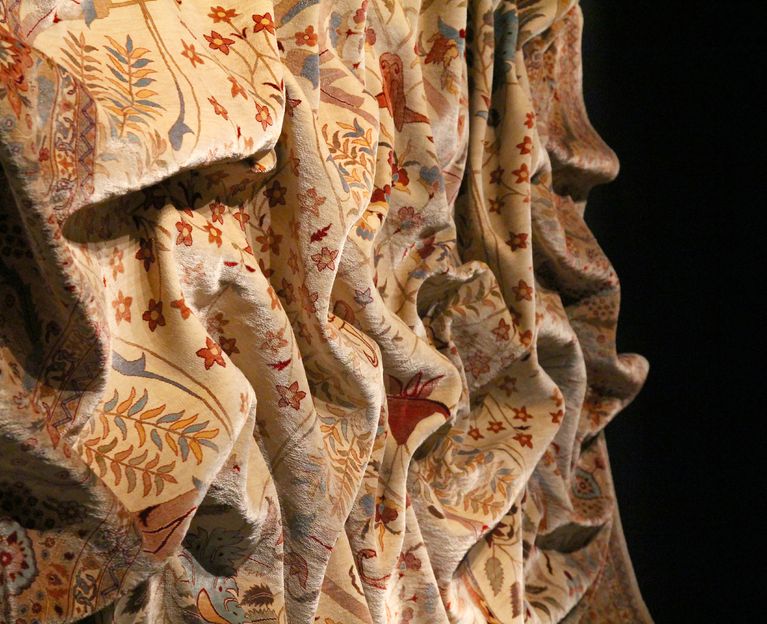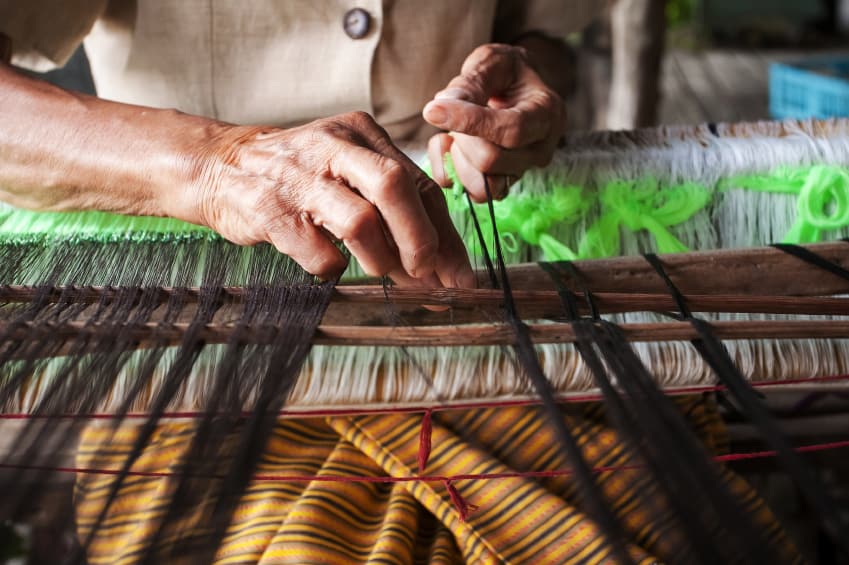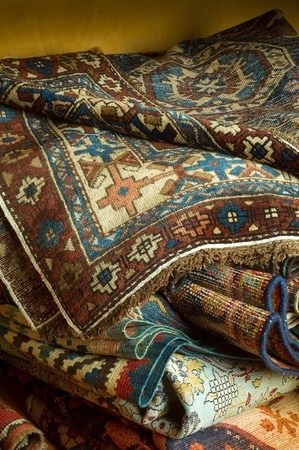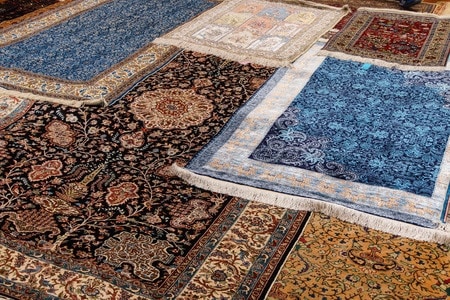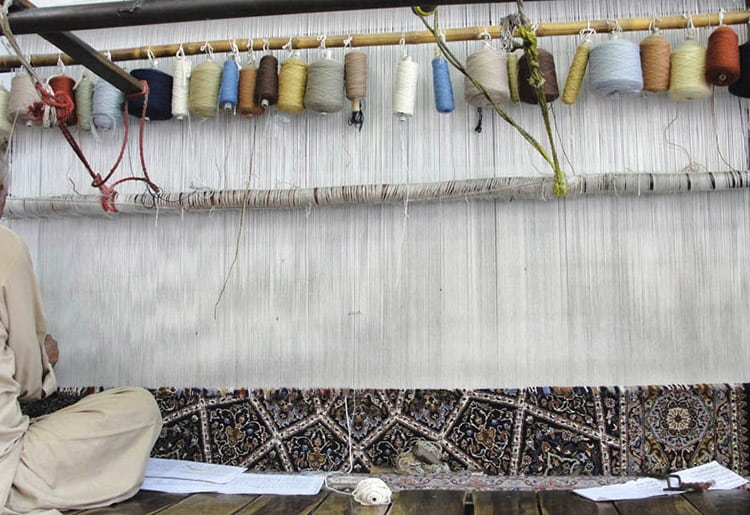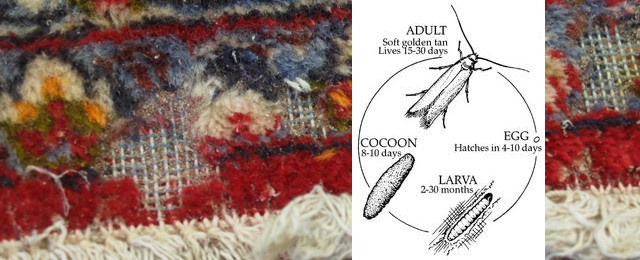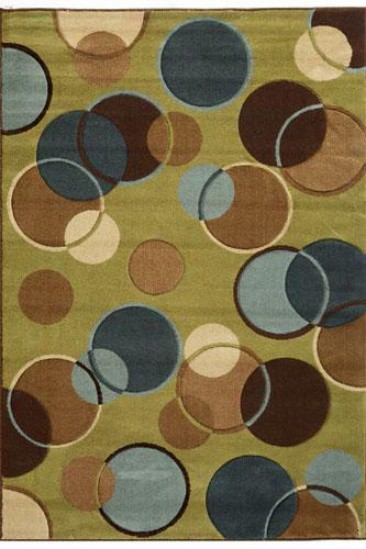A genuine Persian rug or carpet is woven with real silk. Unfortunately, some rug retailers sell Persian rugs that are comprised of artificial silk. This is mainly the case with carpets that come from countries such as India, Turkey, and, sometimes, Pakistan, In Iran, though, you won’t find any such thing as an “Artificial Silk Persian Rug” because silk rugs are not woven with artificial silk there. If you are wondering what the difference is between those two, let us elaborate a bit on that.
To begin with, the cocoon of the silkworm produces a fibrous protein made up of amino acids. When people want to harvest the silk, they boil or heat the cocoons and unwound them into single fibers. Those fibers are then spun into silk or thread yarns and dyed. This is when silk fibers get their distinctive luster 9they are almost translucent!) and rich color.
Silk is an extraordinarily durable material. In fact, its tensile strength is exclamatory and exceeds that of nylon. Indicatively, it has been reported that if we could produce a silk fiber with a diameter similar to a pencil’s, then it could have the strength to lift a 747 aircraft!
Artificial silk, on the other hand, is made of rayon fibers or mercerized cotton. It is NOT a product that has come from the silk worm’s cocoon. Rayon fibers are 100% made of pure cellulose, which is produced by dissolving cellulose to viscose, a thick, yellow liquid that is extruded into a chemical bath through minuscule holes into it. At the end of rather a complex process, we get long filaments spun into yarn or thread. As for cotton fibers, they are treated with a caustic soda solution while being stretched at room temperature, under control tension, to be mercerized. This procedure makes the fiber to become more reflective and lustrous as it swells.
Sadly, some distributors provide retailers with artificial silk Persian rugs, who in turns sell them for the price of real Persian silk rugs.
Why NOT buy an Artificial Persian Silk Rug
Many may say, “If the price is right, why not buy an artificial silk Persian rug that looks equally stunning as a silk one?”. Yes, they may both look lavishing at first, but wait until a few months pass. Persian silk rugs made of artificial silk don’t stand a chance next to the real thing. Their fabric is not synonymous with long lasting quality, and they lose their shine pretty quickly. Not to mention durability that can’t even come close to that of wool.
How to Know if your Persian Silk Rug is the Real Thing? The First Step.
First of all, look at the silk Persian rug you are considering to buy very carefully from up close. Here are what you should pay attention to:
- Is it tightly woven? It should have at LEAST 200 knots/sq.in. To give you an idea, the best Persian silk carpets are woven with more than 500 knots per sq. inch. Persian rugs made of artificial silk often come with less than 250 knots/sq.in.
- Is the design intricately detailed? Nicely patterned?
- Is the rug closely clipped?
- Does it have a real silk fringe? It should look like a natural extension of the structure of the rug. If it is sewn into or on the ends of the rug, then walk away. Do the exact same if the fringe is cotton, it is not real silk.
If your rug has passed this test, be aware that this is only the first part. Below are some useful field tests that can help you determine which rug is fake. Sadly, those selling fakes for real are doing a damn good job mimicking real silk oriental rugs in appearance, so it needs some expertise (that you gain over time) to be able to tell for sure.
How to Test a Real Silk Persian Rug: Step 2
1. Rub it!
Old rug retailers claim that you can tell artificial silk from real silk by rubbing the pile with your open palm. You need to do so vigorously and see how it feels. The real Persian silk rug will feel warm to the touch while the artificial one will remain cool.
2. Burn it!
Burn a small piece of the fringe (clip it off, first). If it smells like burning hair and the ash is flaky and blackened, it is a strong indication that the rug is real silk. If you smell something very close to burning a paper and the ask I powdery and smooth, then your material is artificial.
3. Dissolve it!
This is the last test and the most accurate of all three as it differentiates protein from petrochemicals or cellulose (chemically). Mix 16g of copper sulfate in a cup of water (about 150cc). Add about 10g glycerin and caustic soda until you get a clear solution. Note that all this should be performed at room temperature. The solution you have created will leave nylon, rayon, and cotton unchanged but will dissolve natural silk (a small sample, of course).
To sum up…
The demands of the market, be it locally and/or overseas, dictate the design styles in professional rug workshops. The wefts and warp are most of the times silk or cotton. As for the knot count, the higher, the better. It should be noted that all oriental rug weaving workshops, there is always a master weaver supervising the weaving, making sure all weavers follow the design graphed on paper or drawn out and that the colors match the ones predetermined. What is even more impressive is that village or tribal Persian silk rugs are usually woven in the home and that their design elements are often a product of the weaver’s memory, which leaves room for much greater creativity.
After reading all that, we are sure you feel it in your heart why silk Persian rugs are so unique and valuable!
Here are some interesting pieces on How to Tell a handmade from machine-made Persian rug, Top Rug Tips, and How to identify authentic handmade oriental rugs, that you might want to check out!

